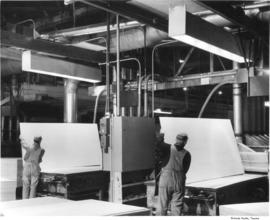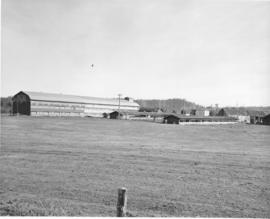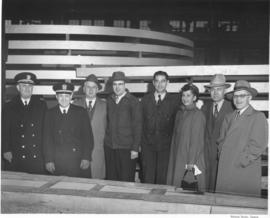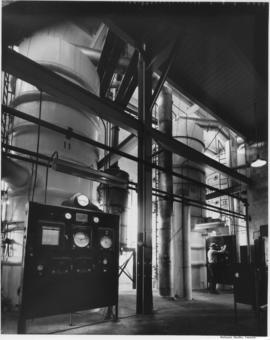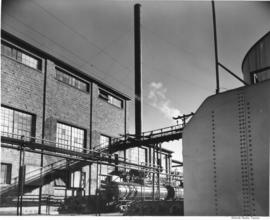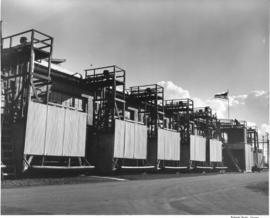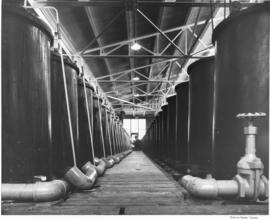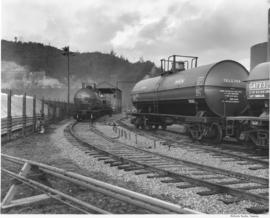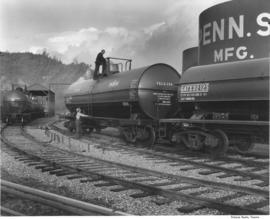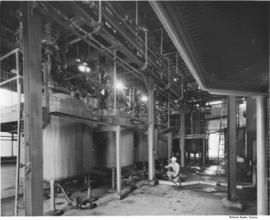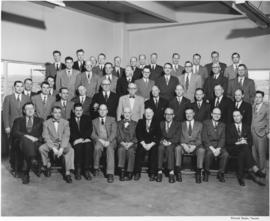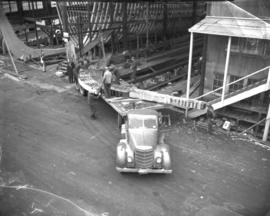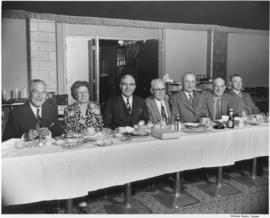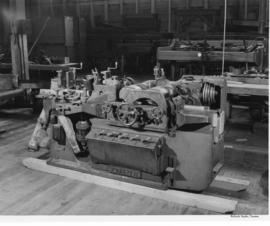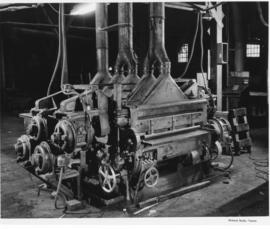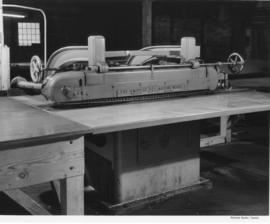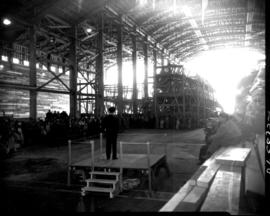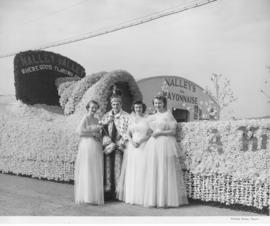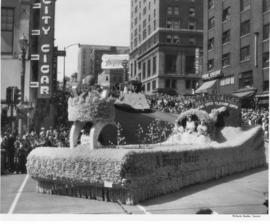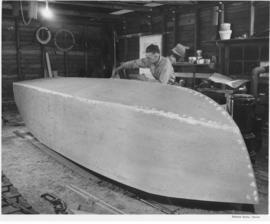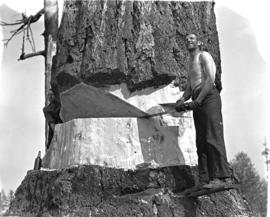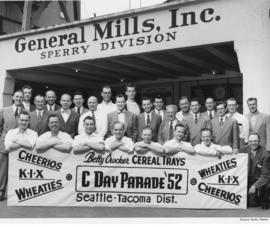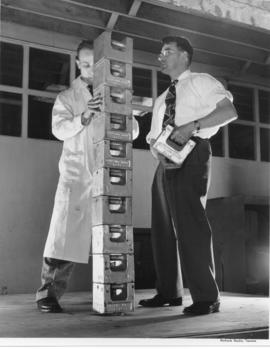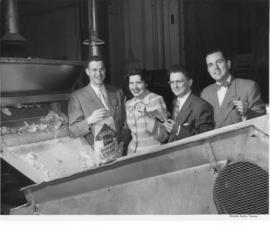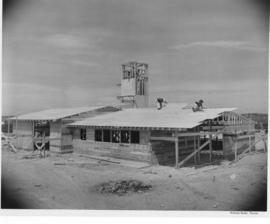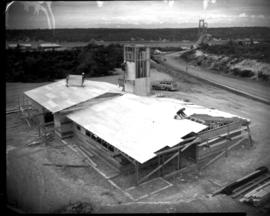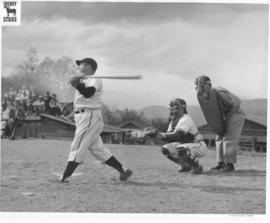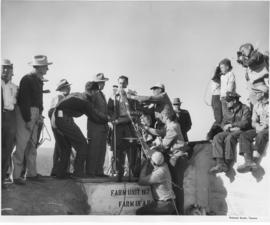In May of 1936, L. A. Case, peeking around the tree on the left, and Jack Kasbaum, on the right, used a long, crosscut saw, called a "Misery Whip", to fell a 750-year-old fir tree near Kent. An 18 foot section from the tree made a nation wide tour to advertise Washington state finishing at the Dallas and Fort Worth, Texas, expositions. The day appears hot and Jack Kasbaum's undershirt is stained with sweat and dirt from his exertions. Although expert loggers, the two spent an entire day at work; careful to keep the bark and tree intact in its fall to earth. The bottle on the left of the picture is filled with kerosene oil, used to cut the pitch which gathers on the saw. The tree stood over 200 feet high and was nine feet in diameter. After a two year search, it was selected as a typical Northwest timber tree.The section of tree was bound with heavy steel bands and mounted on a semi trailer for its tour. The "Washington to Texas" tour also featured displays from Northwest manufacturers and stopped in hundreds of cities before reaching the Texas exposition. Afterward, the tour made a circuit of the principal Eastern cities.(T.Times 5/6/1936). for more images of the same event see T96 images 1 & 3
Lumber industry--Tacoma--1930-1940; Firs; Loggers; Case, L.A.; Kasbaum, Jack;
